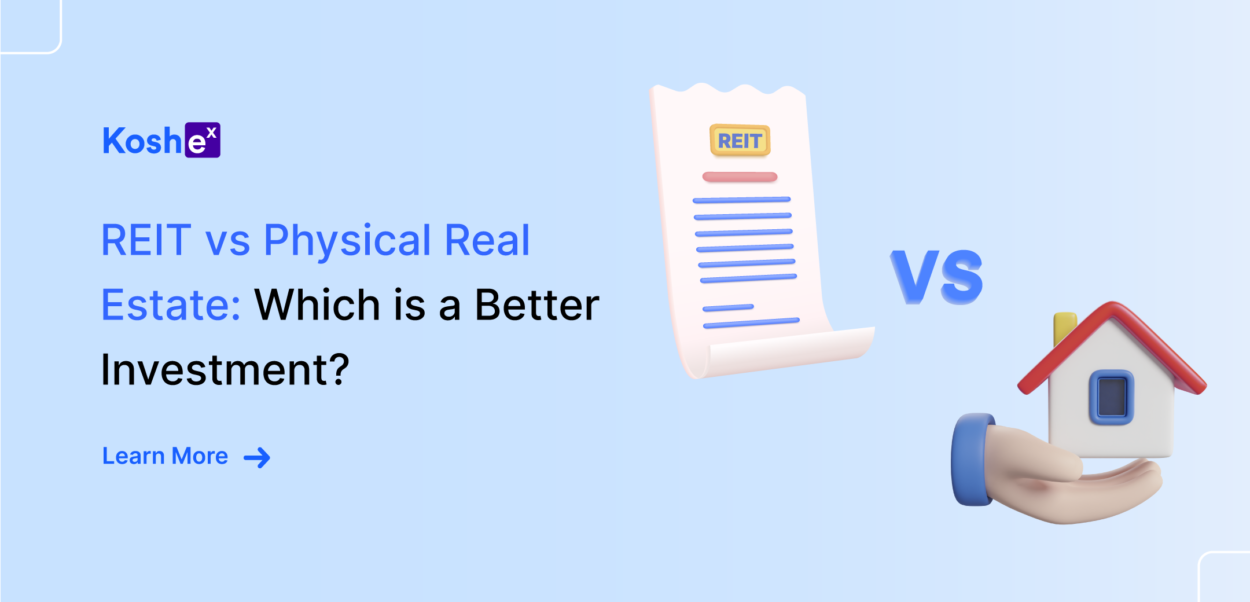Real estate has been a go-to choice of investment for Indians for a long time. It will be fair to say that it is an aspirational dream for many.
People mostly buy a house for self-residence or to grow their wealth while diversifying their assets.
Although In India, it is less common to invest in commercial properties due to many factors, for example, it requires a large capital investment, making it an expensive affair.
This is where REIT or real estate investment trust comes in.
What are REITs?
REITs are trusts that collect funds from multiple stakeholders and invest them in income-generating real estate properties. These can be residential properties, office spaces, commercial properties, etc.
REITs work a lot like mutual funds. But instead of securities, REITs have real estate assets or units. The units represent your part ownership of the real estate assets held by the trust.
SEBI mandates REITs to invest 80% of the funds into income-generating assets and also needs to distribute 90% of the income to unit holders.
At present, there are three REITs in India: Mindspace REIT, Brookfield REIT, and Embassy REIT. These operate in commercial real estate, mainly office spaces.
Embassy REIT has properties in key locations in Bengaluru. At the same time, Brookfield REIT’s properties are spread in Noida, Gurugram, Mumbai, and Kolkata. All REITs in India operate in major regions with high demand for office spaces.
REIT vs Physical Real Estate: Key Differences
One major difference between REITs and investing in physical real estate is one does not have to buy the entire property while investing in REITs. Only certain units can be purchased. The minimum investment can range between ₹10000 to ₹15000.
You can also buy different units of trust to diversify the portfolio. On the other hand, investing in physical real estate requires a huge amount to buy a property and the down payments can take a toll on your bank account.
REITs can easily be bought and sold, as they are traded on the stock exchange while selling a physical property requires a buyer and sometimes an agent.
It is also time-consuming as it requires a lot of paperwork. But investing in REITs only requires you to have a Demat account.
Physical properties also come with a lot of additional costs like maintenance charges, transaction costs on registration, property tax, water tax, and more. REITs don’t carry any of these costs.
Investing in REITs doesn’t get you ownership of the property. You only get certain units. Meanwhile physical real estate gives you complete ownership of the property. You get to use it however you like. You even get a say in how the property will be utilized.
According to research by RBI, 84% of household income in India is invested in real estate, followed by gold (11%) and other financial assets (5%).
A lot of people put their money into real estate properties to generate rental income. But rental income can fluctuate. The rent size depends on many factors, like the location and type of the property.
But with REITs, this is not the case; they can provide regular dividends. Generally, they generate returns of around 5-6%. Some properties like co-working and co-living spaces can generate returns ranging between 6-11%.
Who Should Invest in REIT?
REITs are a great option for people looking to diversify their investment portfolios. It lets you invest in assets other than bonds and stocks. REITs also let you invest in the trusts of your choice.
Managing REITs is hassle-free. There is no maintenance cost or stress of vacant property, managing tenants, repairs, etc. And to top that, REITs can provide regular income through dividends.
Who Should Invest in Physical Real Estate?
Investors who want the whole personalized experience of the project, from buying, to managing, to selling the property, should invest in physical real estate. This lets them have complete control over the property as well as what they want to do with it.
Another helpful factor is you can take a home loan to buy real estate. And a home loan gives you benefits for the long term. There are tax deductions on the interest and principal amount.
One thing to remember while buying real estate is that it is a long-term investment. And it also requires a lump sum amount of money when you make the down payment. If these criteria are manageable, physical real estate is a suitable option.
Final Word
Real estate investment trusts, or REITs, have opened a new investment avenue for investors. They don’t require a lot of fuss and are more accessible than physical real estate. REITs can even yield more returns than physical properties.
India is also going to add the listing of more REITs soon. This will further increase their accessibility and provide relaxation in terms of minimum lot size.
However, make sure to check your asset allocation and risk profile before you invest in REITs.
Investing smartly can help you in earning higher returns. For more investment options and other financial queries, visit us at Koshex. We have experts on our team to make your financial journey easy.
FAQs
- How can I invest in REITs in India?
Currently, only public REITs are registered with SEBI in the Indian market. These REITs can be traded on stock markets like any other stock. You will need a Demat account to start trading.
- How are REITs taxed in India?
Capital Gains on the sale of REIT are taxed at 15% if held for less than one year. If held for over a year and the amount is more than ₹1 lakh, it is taxed at the rate of 20%. It is best to seek advice before investing in such an asset. You can reach out to us here for better wealth management.
- What type of risks are involved with REIT?
Just like stocks and bonds, REITs are subject to market risks. The risk factors include leverage risk, market risk, and liquidity risk.









Leave a Comment